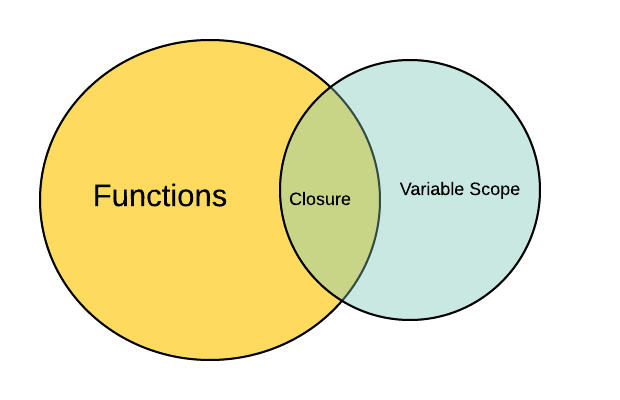Understanding Closures in JavaScript: A Friendly Guide with Intuitive Examples😉
Table of contents
Closures are a powerful and often misunderstood concept, but fear not, as we will demystify them with simple explanations, intuitive examples, and helpful diagrams. By the end of this blog, you'll have a clear understanding of closures and how they can be used in your JavaScript code.
Let's dive in!
What are Closures?
In JavaScript, closures are functions that remember the environment in which they were created. They have access to variables from their containing (outer) function, even after that function has finished executing. This unique behavior allows closures to "enclose" their own scope, making them incredibly useful in certain programming scenarios.
Let's break down the components of a closure:
Outer Function: The function that contains the inner function is called the outer function. It creates closure by defining variables within its scope.
Inner Function: The function defined inside the outer function is the inner function. It retains access to the variables of the outer function, forming the closure.
Lexical Environment: The combination of the variables and their values in the scope where the function is created is called the lexical environment.

Here is an example of closure in JavaScript:
const outerFunction = () => {
const name = "Rakesh";
const innerFunction = () => {
console.log(name);
};
return innerFunction;
};
const innerFunction = outerFunction();
innerFunction(); // logs "Rakesh"
In this example, the outerFunction function creates a variable called name and a function called innerFunction. The innerFunction function has access to the name variable even though the outerFunction function has finished executing. This is because the innerFunction function is a closure.
flowchart
OuterFunction --> Name
OuterFunction --> InnerFunction
InnerFunction --> Name
In this flowchart, the OuterFunction function creates the Name variable and the InnerFunction function. The InnerFunction the function has access to the Name variable because it is a closure.
To understand closures better, let’s look at another example:
function makeCounter() {
// declare a local variable called count
let count = 0;
// return an inner function that can access count
return function() {
// increment and return count
return ++count;
};
}
// create a counter function by calling makeCounter
let counter = makeCounter();
// call counter multiple times
console.log(counter()); // 1
console.log(counter()); // 2
console.log(counter()); // 3
In this example, we have a function called makeCounter that creates and returns another function. The inner function can access and modify the local variable count that is declared in the outer function. The inner function is a closure, because it remembers and uses the lexical environment of the outer function.
When we call makeCounter, it returns the inner function and assigns it to the variable counter. The variable count is not accessible from outside the makeCounter function, but it is still alive in memory because the inner function has a reference to it. Every time we call counter, it increments and returns the value of count.
How do closures work?🤔
To understand how closures work, we need to understand how JavaScript handles variables and scopes. JavaScript has two types of scopes: global scope and local scope. A global scope is the outermost scope that contains variables that are accessible from anywhere in the code. A local scope is created by a function or a block (with let or const) that contains variables that are only accessible within that scope.
JavaScript also has two types of variables: global variables and local variables. A global variable is declared outside any function or block, or without using any keyword (var, let, or const). A local variable is declared inside a function or block, using one of the keywords (var, let, or const).
When JavaScript executes a function, it creates an execution context for that function. An execution context is an object that contains information about the current state of the code execution, such as the arguments, the return value, and the this value. An execution context also has a reference to its lexical environment, which is another object that contains all the variables and parameters available to the function.
When JavaScript looks for a variable in a function, it first checks if the variable exists in the current lexical environment. If not, it looks for it in the outer lexical environment, which is the lexical environment of the parent function. This process continues until it reaches the global lexical environment, which is the outermost lexical environment that contains global variables. If the variable is not found in any lexical environment, JavaScript throws a reference error.
A closure is created when an inner function has a reference to its outer lexical environment. This means that even after the outer function has returned and its execution context has been removed from the stack, its lexical environment still exists in memory because it is referenced by the inner function. The inner function can access and modify any variable or parameter from its outer lexical environment.
Conclusion:🔚
Congratulations! You've now grasped the concept of closures in JavaScript. Closures allow functions to "remember" their lexical environment, enabling powerful and flexible programming techniques. They are commonly used in event handlers, callbacks, and encapsulation patterns.
Remember to use closures wisely, as they can impact memory usage if not handled carefully. Keep practicing and experimenting with closures to master this essential aspect of JavaScript development.
Keep Exploring! 🚀 More exciting tech insights coming soon!

